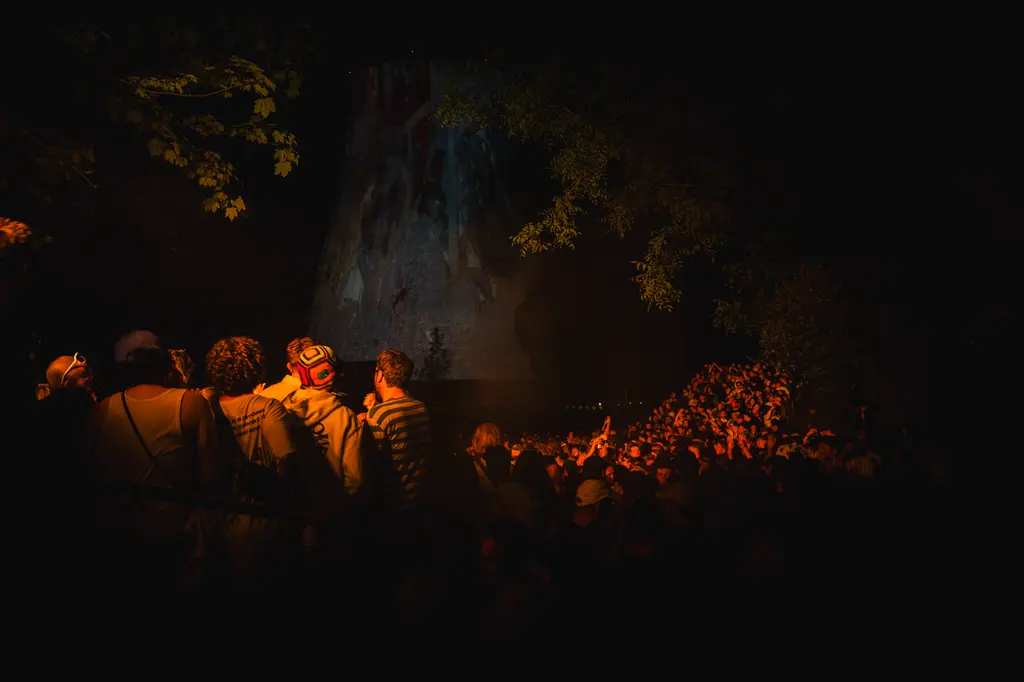Revisiting the early years of New York’s punk explosion
- Text by Miss Rosen
- Photography by Gary Green

American photographer Gary Green first picked up the camera as a youth coming of age in suburban Long Island during the late 1960s. “My parents thought it was another thing I’d give up like the saxophone and other hobbies that languished after a year or two,” he recalls. But, to his parent’s surprise, his interest in photography steadily grew into a career.
In the summer of 1976, Green moved to New York to work for a commercial photographer in midtown Manhattan. “New York was cheap, dirty, and dangerous in the best way. There was art to be seen, music to be heard, and artists making work everywhere,” he says.
Camera in hand, Green quickly hit the burgeoning punk scene at Max’s Kansas City and CBGB, photographing bands like the New York Dolls, Blondie, and the Ramones, as well as the people on the scene like Andy Warhol. In the new exhibition, Rebels & Dandys, which features a selection of work from his recent book When Midnight Comes Around (Stanley/Barker), Green looks back at this pivotal era in music history.

“There was a feeling that nowhere else on earth was as exciting as what was going on in downtown New York,” Green recalls. Green would pay a visit to CBGB on the Bowery at a time when it was known the famed avenue was known as Skid Row. “It was next door to a single-room-occupancy hotel so punk fans and men down on their luck often crossed paths,” he says.
“Inside was a mess, but I never really thought of it that way. It was just a bar and club that smelled like beer, had tables in front and the dressing room for bands was right behind the stage. It was very easy to approach whomever you wanted to. Although certain bands were known for playing Max’s or CB’s, most played both. The overall difference was more a matter of style than music.”
Once a chic eatery for the New York avant-garde, Max’s was no longer the epicentre of the Warhol crowd. By the 1970s, under the new ownership of Tommy Dean, it became the destination for the emerging punk scene, which was still fairly small and intimate.

David Johansen (New York Dolls), Lou Reed, Andy Warhol, The Bottom Line, 1978

Girls with fake guns, Peppermint Lounge, c.1980
“I started photographing regularly at the clubs and met Alan Betrock, who had started New York Rocker. My first assignment for them was to make portraits of rockabilly singer Robert Gordon. He lived on the Upper West Side, where I’d never even been,” Green recalls with excitement.
“When he opened the door, it was as if Elvis was living there before he became rich. And then Robert was standing there in his 50s-looking clothes – slim slacks, a fifties-style jacket, black shirt, and pompadour that was just perfect. He played me some vintage Elvis and I couldn’t believe my ears – it was as if I had never heard him sing before. I really enjoyed meeting people whose music or art I had admired,” says Green. “I was just starting out as an adult and life was filled with hope and innocence.”

Anya & Roxy, 1976

Michael “Spider” Sanders (Pure Hell), Georgie Day (the Miamis), CBGB’s, c. 1970s

DJ, Club 57, New York, c. 1981

Laura Dean, Max’s Kansas City, 1978
Gary Green: Rebels & Dandys is on view Galerie Miranda in Paris through May June 26, 2021.
Follow Miss Rosen on Twitter.
Enjoyed this article? Like Huck on Facebook or follow us on Twitter.
You might like

Huck teams up with Eastern Margins for a special SXSW London showcase
From Shibuya to Shoreditch — Taking place at Village Underground on Monday, performances will come from MONO, Nina Utashiro, Ena Mori, Jianbo, LVRA & Soda Plains.
Written by: Isaac Muk

Analogue Appreciation: Shura
I Got Too Sad For My Friends — In an ever more digital, online world, we ask our favourite artists about their most cherished pieces of physical culture. Today, it’s English singer-songwriter Shura.
Written by: Shura

After Assad’s fall, Syria’s musicians rebuild from the rubble
Spaces Between the Beats — Following decades of dictatorship and 14 years of civil war, the country’s classical and creative scenes have an opportunity to build from scratch. Andrei Popviciu speaks to the people hoping for a flourishing new era of art and sound.
Written by: Andrei Popoviciu

At Belgium’s Horst, electronic music, skate and community collide
More than a festival — With art exhibitions, youth projects and a brand new skatepark, the Vilvoorde-Brussels weekender is demonstrating how music events can have an impact all year round.
Written by: Isaac Muk

Block9 reveals its Glastonbury Festival 2025 plans
Party and protest — The nightlife hub will feature a bigger-than-ever Saturday daytime block party across The NYC Downlow and Genosys, and a huge collaboration with artist-activist group Led By Donkeys.
Written by: Isaac Muk

We are all Mia Khalifa
How humour, therapy and community help Huck's latest cover star control her narrative.
Written by: Alya Mooro

